Combat aircraft. The evolution of the attack fighter
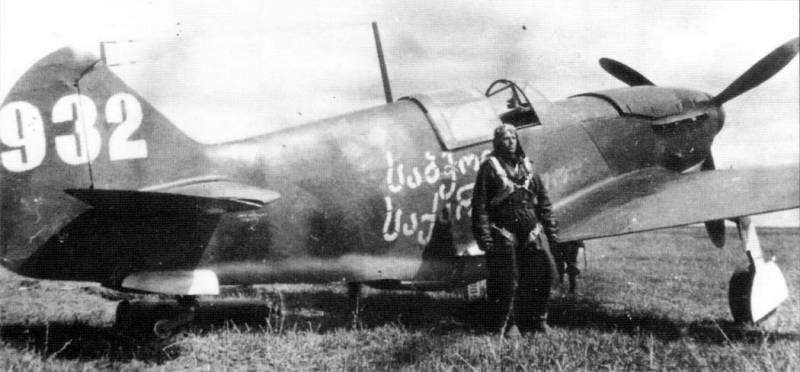
I have already written about stories this aircraft, but decided to return. And it turned out to systematize some of the materials, and, to be completely honest, they were simply already tired of the same type of publications on the Internet on the topic of how we had few new fighters on 22.06.1941/1540/XNUMX (this is XNUMX pieces - not enough) and what indecency they were in compared with the German ones.
We will not talk about numbers, we will talk about other things. Namely - about the evolution of LaGG-3. And not from LaGG-3 to La-5, in fact, La-5 is a completely different aircraft, with a different engine, different aerodynamics, and so on. We will look at how the LaGG-3 was changed from series to series in accordance with the changing situation.
On June 22.06.1941, XNUMX, the Red Army Air Force had three models of new fighters at its disposal.
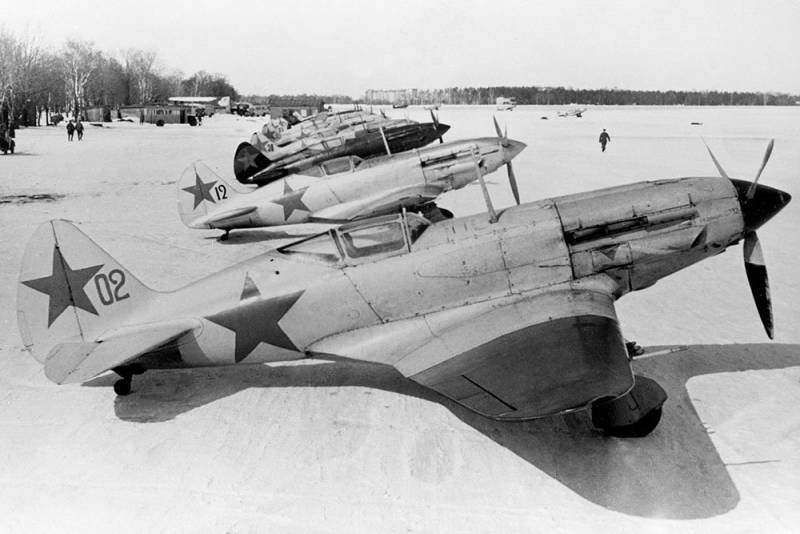
The MiG-3 was considered the highest and fastest, but the most poorly armed. The truth about this machine is very far from what they write about the MiG-3. Let's start with the fact that it was not built as a high-altitude fighter-interceptor, the MiG-1 aircraft was part of the same competition as the LaGG-1 and Yak-1. And therefore, by no means could a high-altitude interceptor enter the competition for a front-line fighter. It just happened, that's how the AM-35 engine showed itself.
And the armament of the MiG-3 was quite decent, 5 machine guns. 2 synchronous ShKASs in the nose, 12,7 mm BS through the propeller hub and 2 BK machine guns (also 12,7 mm) in the wings. Very decent. Why wing machine guns disappear from many authors is hard to say. Yes, there were cases (described by Pokryshkin) that wing BCs were removed at the beginning of the war. But in the beginning they were! And yes, difficult piloting and a bunch of other problems that loudly indicate that if the plane was brought to mind by Polikarpov, and not by Mikoyan, who actually stole the car, then the alignment could be different.
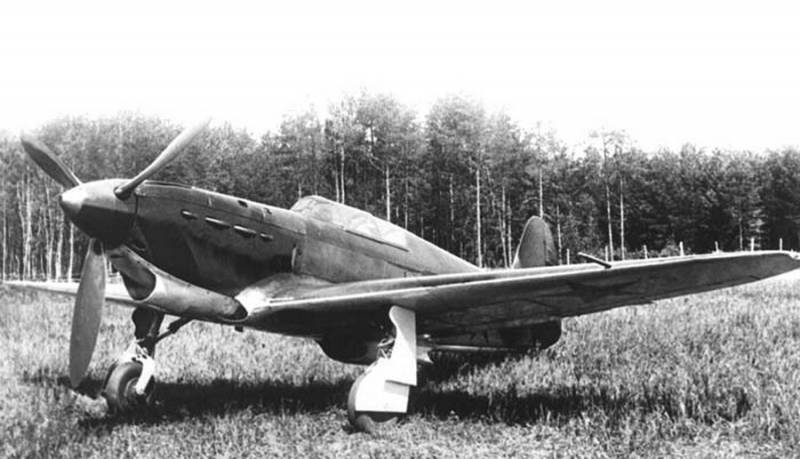
Yak-1, perhaps, is the weakest link in the trinity. Possessing good maneuverability, the aircraft was minimized as much as possible in all respects, including in terms of weapons. But the machine had the potential for modernization, which allowed it to fight through the entire war, although even the latest iteration of the aircraft, the Yak-3, had problems with the same range.
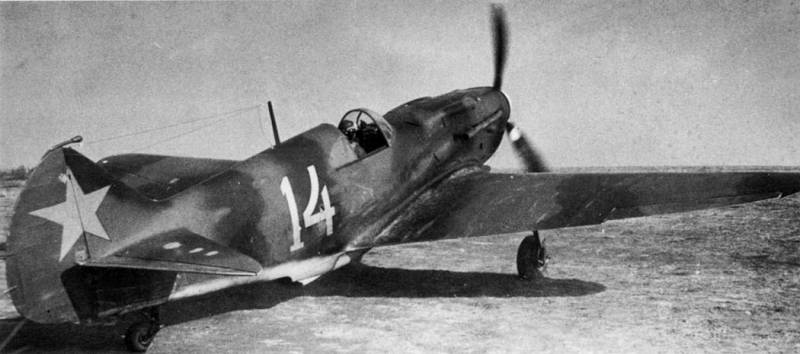
LaGG-3 was somewhat similar to colleagues. Problems with a weak engine, like the Yak-1, and difficult piloting, almost like the MiG-3.
And LaGG-3 at the beginning of the war was considered the most promising aircraft of the entire trio. And, unlike the MiG, which already in 1942 began to be shoved into the air defense regiments of cities, the LaGG-3 fought with all its heart.
In 1942, this machine was in service with 20 (!) Fighter regiments. It's a number, you know. Especially if we take into account the difficulties with the release of delta wood in the form of phenol resins exclusively imported.
So in 1941 he fought, in 1942 he fought in full, in 1943 he fought with tension, in 1944 ... he fought! Yes, in the calmest sectors of the front such as Karelia and the Arctic, but he fought! And, what is most interesting - in 1945 he also fought! With Japan! LaGG-3 took a direct part in the defeat of the Japanese Kwantung Army. Indeed, why not use aircraft with intact motor resources? Moreover, they were not used as fighters.
In total, 1940 LaGG-1944s were built from 6 to 528.

What does it say? That the plane was quite. Here the MiG-3 was “not a cake at all”, and they were released exactly half as many - 3. And there’s no need to talk about the Yak-178, the plane was so weak that modernization and improvements began almost immediately. And out of 1 thousand planes of the line (Yak-8, Yak-1u, Yak-1B, Yak-1M) "clean" Yak-1, 1 aircraft were produced.
Here are the numbers.
Now about the "deceived piano". Yes, the plane got such a nickname, but it was not even a LaGG-1, but a prototype I-301. Without weapons, licked and varnished, of course, the plane was both beautiful and fast. And he easily overcame the bar of 600 km / h, showing even 610 km / h in tests.
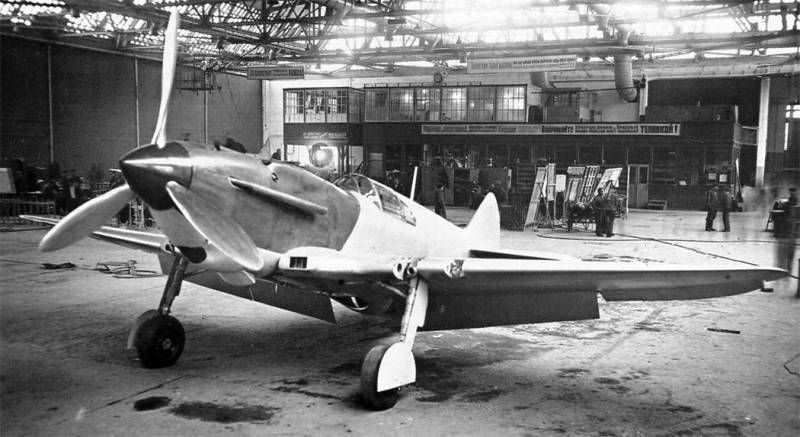
Of course, the production aircraft, which was assembled in the conditions of war, you yourself know with what qualified personnel, barely gave out 550 km / h. But for those who are interested, read the history of the Airacobra and why the British abandoned it. In short, everyone did it.
But we are not interested in the prototype, but in what went into the series. Paint instead of varnish, no grinding and polishing, weapons and everything else - a combat aircraft.
Series 1-3 (from December 1940)
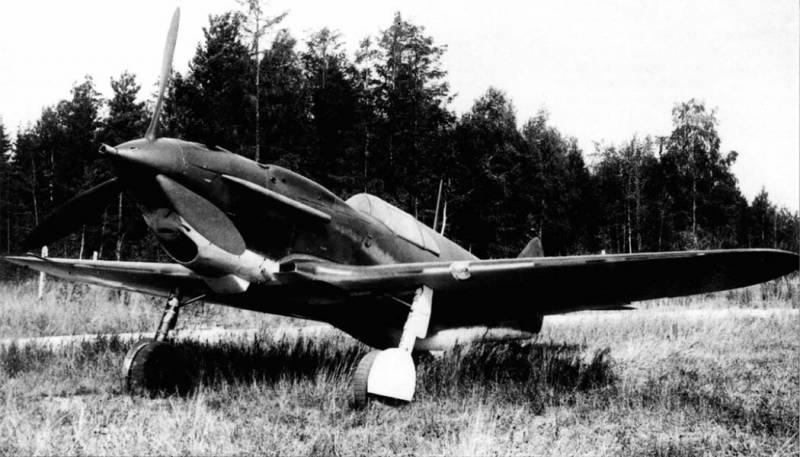
The original LaGG-1 did not go into production. Only five of these machines managed to be assembled, and then the military intervened and demanded that Lavochkin install additional tanks in order to increase the flight range to 1000 km. Yakovlev, by the way, defended his car from such alteration, but Lavochkin could not. So the LaGG-3 with five tanks went into the series. Plus, unlike the LaGG-1, an armored back and a radio station were installed on the LaGG-3.
The MP-6 23 mm motor gun, which turned out to be very unsuccessful, was replaced with a proven 12,7 mm Berezin machine gun, which fired through the propeller hub. A couple more BSs (Berezin synchronous, 12,7 mm) were placed above the engine, and even higher above them - a pair of 7,62 mm ShKASs. For the ShKASs, two drop-shaped fairings had to be made in the cover of the weapons compartment, which are perfectly visible in the photographs of that time.
In general, it turned out to be a car with a rather terrible second salvo - 3,05 kg. For comparison: the Yak-1 gave out 1,86 kg / s, and the Bf.109E - 1,53 kg / s.
The car turned out to be chic in terms of filling, but the M-105P was frankly weak for her. Therefore, immediately after the start of the war, the fight against excess weight began.
Series 4-7 (from July 1941)
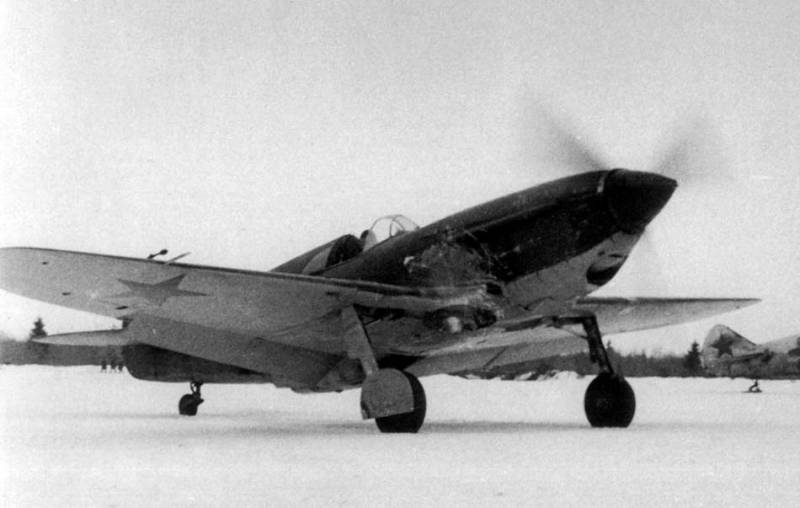
The struggle with weight resulted in the following manipulations: from the 4th series, the LaGG-3 lost the right synchronous Berezin heavy machine gun, and the 12,7-mm machine gun that fired through the propeller hub was replaced with a 20-mm ShVAK cannon.
This change had practically no effect on the power of the volley, as well as on the lightening of the car.
Series 8-11 (from August 1941)
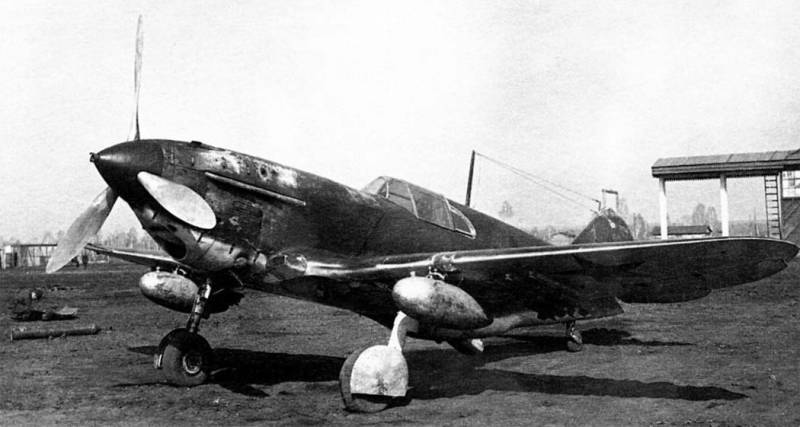
The cannon, instead of two heavy machine guns, did not improve flight performance in any way, and therefore both ShKAS were removed from the LaGG-8 on the 3th series of aircraft.
As a result, the armament of the aircraft ceased to differ from the armament of the Yak-1B, that is, a 20-mm cannon and one 12,7-mm machine gun. This disarmament had almost no effect on the flight performance, but the second salvo noticeably decreased and the LaGG-3 became practically unsuitable for air combat. The weight of the aircraft has noticeably decreased (by almost 200 kg), but this has practically no effect on flight performance.
And here began a turn from a front-line fighter to a strike one. The People's Commissariat of the Air Force rightly considered that since an aircraft cannot work as an aircraft fighter, let it destroy armored vehicles and other targets.
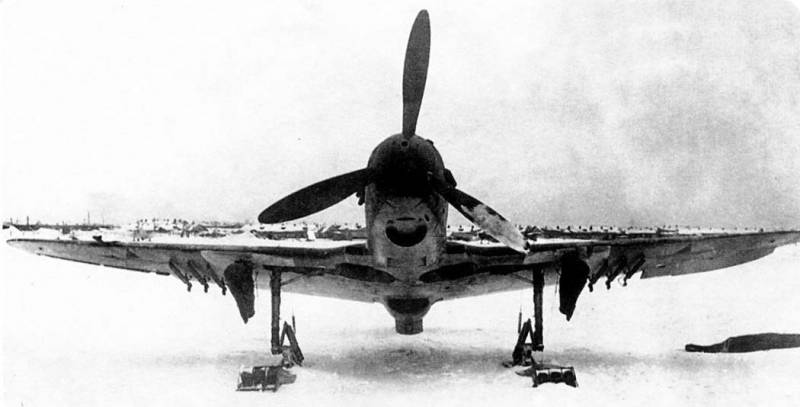
To begin with, aircraft of the 8th series began to be equipped with six launchers for RS-82 rockets. Instead of ShVAK, they began to install a 23-mm VYa cannon on some of the test vehicles, the more powerful projectile of which was more suitable for destroying armored vehicles.
And in the 11th series, developing the transformation of the LaGG-3 into an attack aircraft, D3-40 bomb racks were installed on the aircraft, on which bombs weighing up to 50 kg could be hung. It was possible to hang incendiary aviation devices ZAP-6, containing 38 liters of fire mixture, or hanging tanks for 80 liters of gasoline. Some machines were equipped with RO-132 guides to launch more powerful 132-mm caliber rockets.
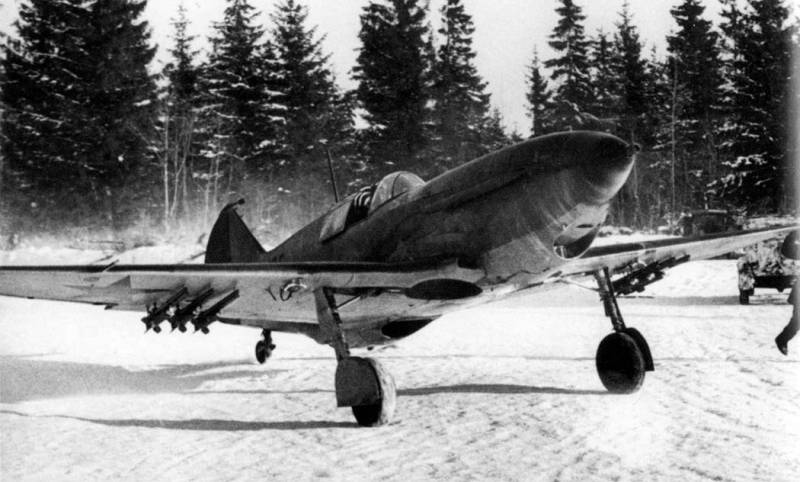
As part of another struggle with weight, two fuel tanks were removed, from which the alterations of LaGG-1 began.
What happened: despite lightening the car by another 100 kg, everything became even worse in terms of speed. Bomb locks and guides for the RS clung to the air, the engine did not become more powerful, and measurements taken in September 1941 showed that the speed had dropped to 503 km/h, and the rate of climb from 735 to 605 m/min. The range also suffered, and instead of 1100 km, the LaGG-3 could overcome only 760 km without external tanks.
However, if you do not go into such details, it can be stated that just by the end of 1941, the Red Army Air Force had a light universal strike aircraft.
Series 22-35 (from April 1942)
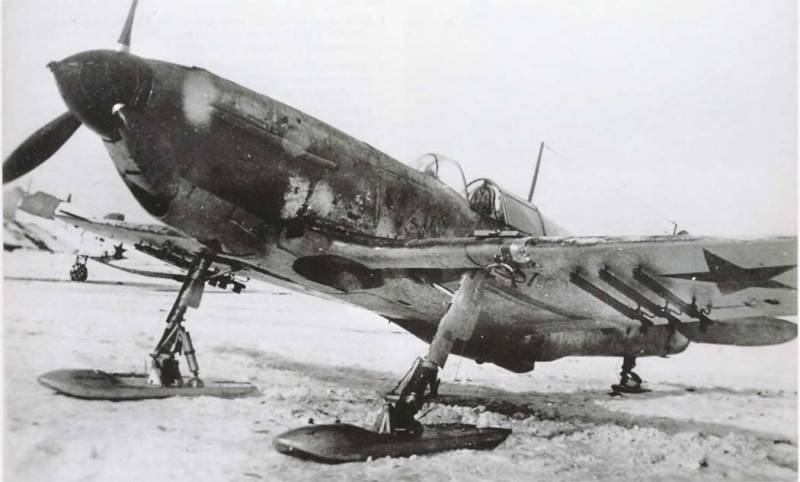
In 1942, the upgraded M-105PF engine with a capacity of 160 hp went into production. more than M-105P. The installation of this engine on the LaGG-3 gave the expected increase in speed to 556 km/h (almost 40 km/h), and the rate of climb increased to 781 m/min. Significant work has been carried out to improve the aerodynamics of the aircraft.
The aircraft began to install a new radio station RSI-4 "Malyutka".
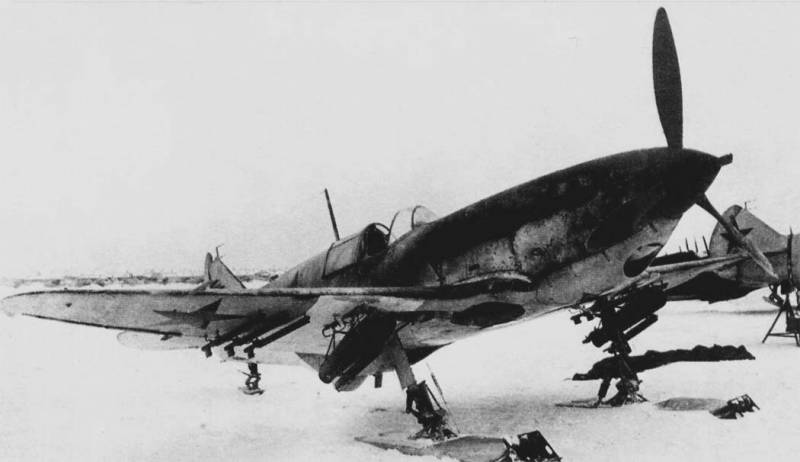
We can say that the LaGG-3 “breathed”, since its performance characteristics became acceptable at the time the aircraft of the series was released.
Series 34-41 (from August 1942)
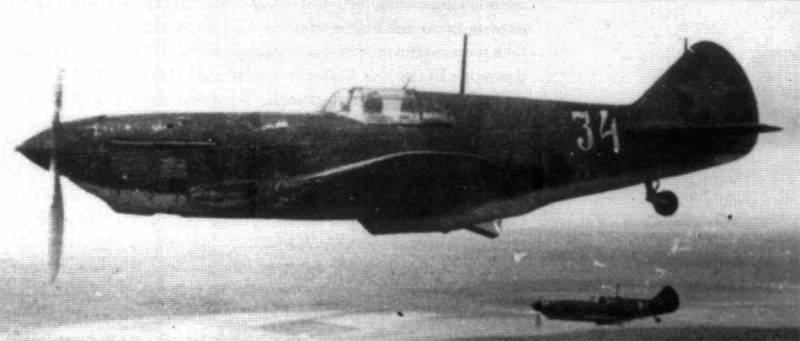
The second half of 1942 was marked by the construction of an anti-tank LaGG-3 armed with a 37 mm gun.
In general, the history of attempts to “make friends” with the LaGG-3 with a 37-mm gun is worthy of a separate saga. The first gun was the Sh-37 designed by Shpitalny. To place it in the nose of the aircraft, I had to work hard, but in the end the 38th series of 75 aircraft was released. Ammunition Sh-37 consisted of 21 rounds.
Combat tests were carried out in 42 and 188 IAP and showed that with the Sh-37, the LaGG-3 became a very formidable opponent for the German bombers, who could not hold the Sh-37 shells. Pilots of the 42nd IAP Colonel Shinkarenko reported on 45 enemy aircraft destroyed by 37-mm cannons.
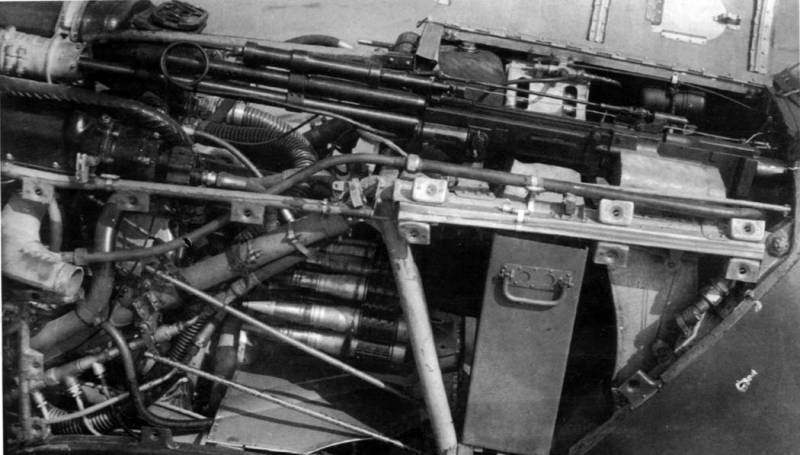
Further, the Sh-37 cannon was replaced by the NS-37 designed by Nudelman and Suraev, lighter and with a large ammunition load. LaGG-3 thus opened the way for 37-mm guns in aviation, since after it these guns began to be installed on the Yak-9T and after the war on jet fighters of the first generations.
LaGG-3 with NS-37 was named "type 33". These aircraft massively took part in the battle for Stalingrad.
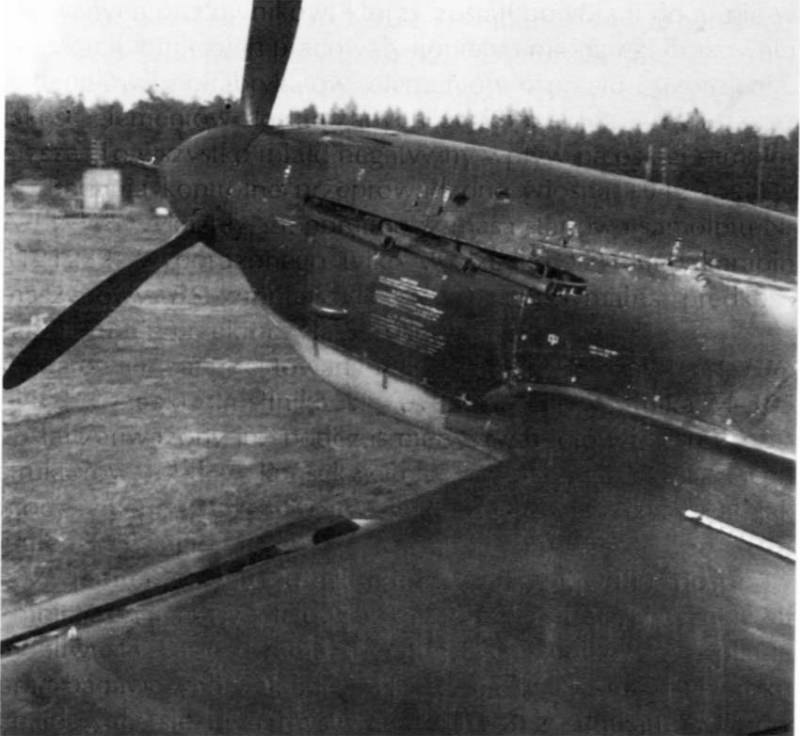
Simultaneously with the release of anti-tank versions, another attempt was made to return the LaGG-3 to fighter aircraft. The 35 series, which turned out to be quite large, was preceded by a lot of work, as a result of which the LaGG-3 was significantly improved.
The tail wheel was made retractable, automatic slats were installed on the wings, many changes were made to improve aerodynamics.
Alas, the LaGG-3 engine was still rather weak for such a machine, at the same time the Germans had new modifications of the same Messerschmitt, and the Soviet aircraft again began to lag behind in all flight characteristics. Indeed, a more powerful engine was needed, and as a result, Lavochkin installed it, but the history of La-5 is another story.
LaGG-3 continued to produce the Tbilisi aircraft factory. In 1943, the production of the 41st series began there. In fact, it was the same “type 35”, to which two ShKASs were returned. This did not bring the expected success, since the armor of German aircraft increased and 7,62-mm bullets no longer caused such damage as before.
Series 66 (May 1943 - June 1944)
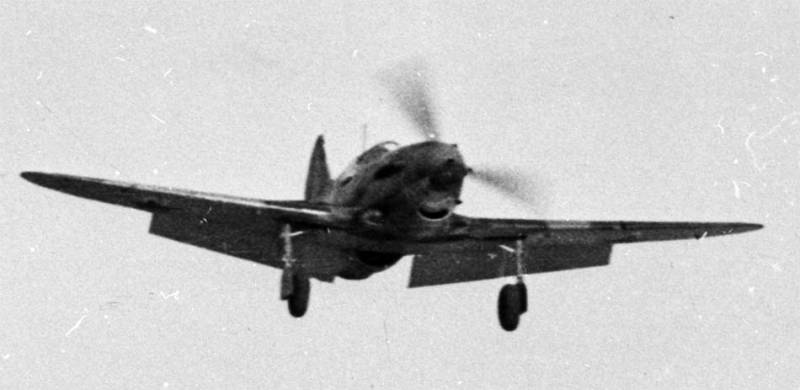
Aircraft of the 66th series became the most advanced of all the LaGG-3 series. They were built from May 1943 to June 1944, after which the production of LaGG-3 finally ceased.
"Type 66" received a new cockpit canopy, like the La-5, with armored glass in the front and rear. Before that, conventional plexiglass was installed on all LaGG-3s.

It was possible to reduce the weight of the aircraft considerably due to the fact that it was possible to switch from delta wood to ordinary pine, which was much lighter, although less durable.
In terms of armament, the LaGG-3s again lost their ShKASs and the armament became the same: one 20-mm ShVAK cannon and one 12.7-mm BS machine gun. Strike weapons consisted of 6 RS-82 or RS-132 and 2 bombs up to 50 kilograms.
Aerodynamics again underwent changes, bomb racks, air intakes and radiator tunnels were “licked”. The speed increased to 590 km/h, the rate of climb to 893 m/min.
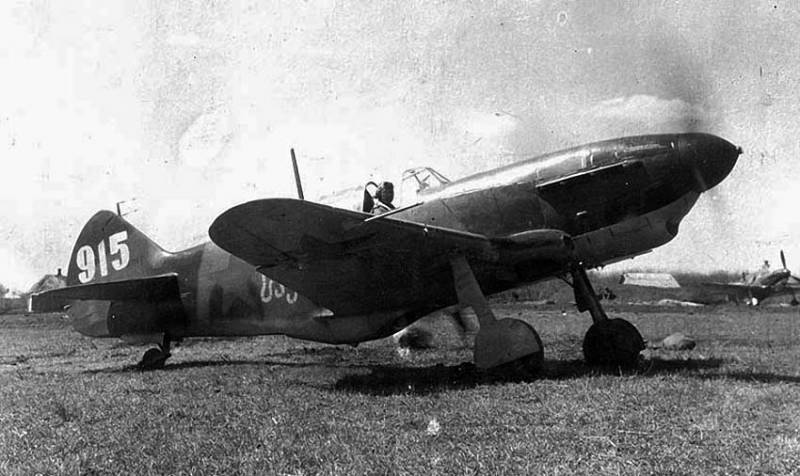
This LaGG-3, although it became the lightest and most advanced in terms of aerodynamics, nevertheless, it was still late in its perfection. La-5, Yak-7 and Yak-9 have already appeared, which left no chance for this aircraft. The production of the LaGG-3 was discontinued, and the aircraft began to disappear from the regiments.
They began to disappear - does not say that they disappeared completely. In reality, the aircraft fought on secondary sectors of the fronts until the very end of the war and even took part in the war with Japan.
What more can be said? You can simply imagine yourself as a pilot of the Red Army Air Force of the 1941 model. Yes, even in such a situation, when there is a choice of which aircraft to sit in the cockpit. Yak-1 or LaGG-3. It's worth sitting down and comparing.
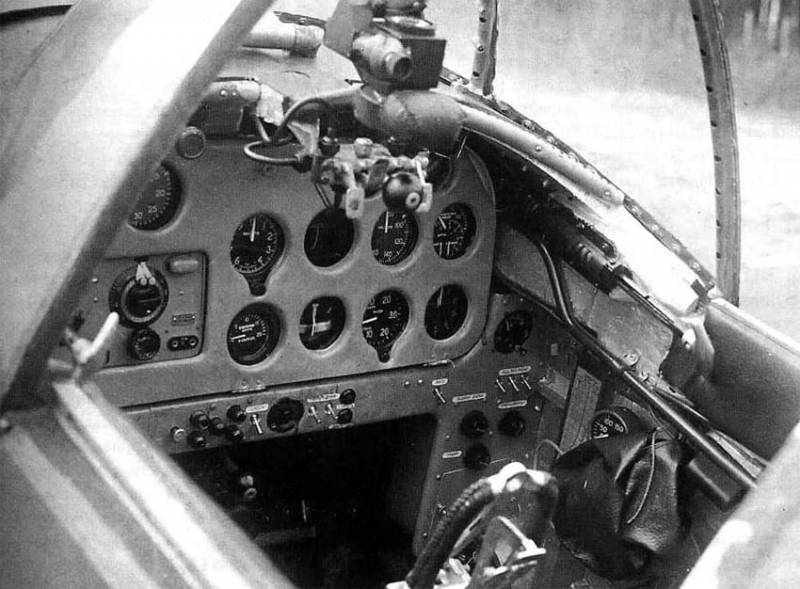
There is Yak-1. Having no advantage over LaGG-3 in speed (LaGG was even faster in theory), significantly superior in rate of climb (by more than 100 m / min), lighter (2950 versus 3340 kg of take-off weight). The ceiling of the aircraft is about the same.
But there is a slight difference. Yak-1 does not have oxygen equipment, LaGG-3 has it. A conditional balloon that allows you to stay at an altitude of more than 5 meters for some time. Necessary? Necessary. Enemy planes can be dragged there in battle, which, by the way, happened. And there the Germans had an advantage, because they had complete order with high-altitude equipment.
Move on. Radio station. RSI-3 "Eagle". 12,3 kg of hope that you will be heard. She was in LaGG-3, the pilots Yakov and MiGs communicated by swinging their wings and other signs. Yes, The Eagle was a terrible radio station, especially compared to the American and British ones. But she was, and through the crackle of interference she helped the pilots communicate.
Another important point: range. The Yak-1 lost a lot, in general, the range is the weak point of Yakovlev's aircraft. 650 km against 1100 is serious.
Armament. ShVAK / 2 ShKAS in the Yak-1 against a battery of 3 BS 12,7 mm and 2 ShKAS - here LaGG clearly wins over explicit. The total weight of a volley is twice that of the Yak-1.
And the main advantage of the LaGG-3 over the Yak-1 and MiG-3: it was very difficult to set fire to and practically did not burn. A feature of expensive delta wood.
What aircraft will you fly into battle?
Let's look at those who went into battle on the LaGG-3 and did it successfully. Well, could there have been pilots who fought on a "guaranteed coffin"?
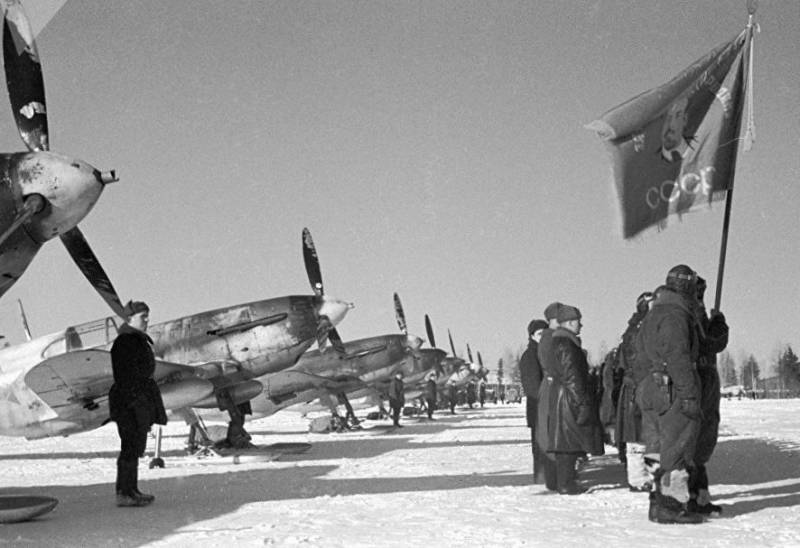
By the way, the “Lacquered Guaranteed Coffin” was invented by villains from history in the nineties. The pilots of the Great Patriotic War could not call the plane that, because in part it was painted with paint, and not varnished. And so the paint was the object of criticism throughout the war, because it worsened aerodynamics. And there was no varnish.
Seriously, LaGG-3 had its own nickname. "Taranka" or "Taranka with caviar". For its peculiar shape of the fuselage.
So what do we have in terms of successful "tarankovodov"? And they are.
Hero of the Soviet Union Lieutenant Colonel Galchenko Leonid Akimovich
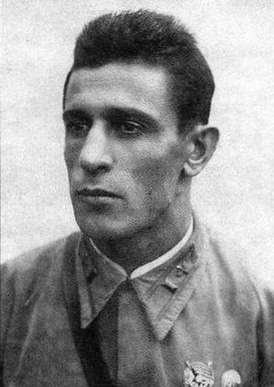
410 sorties, 90 air battles, 24 personal victories + 12 group victories.
Galchenko fought in the north, near Murmansk, where air-to-air fighting was the norm. He could have shot down more, but the stroke put the pilot out of action. Galchenko finished the war as a deputy regiment commander. Galchenko shot down his last German aircraft in October 1944.
Hero of the Soviet Union, Colonel Igor Kaberov
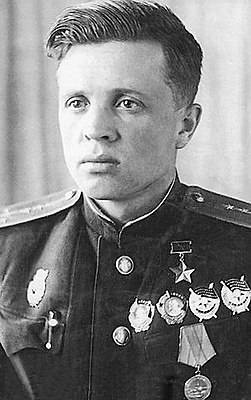
476 sorties, 117 air battles. He personally shot down 10 enemy aircraft and 19 in the group.
Major Zaitsev Alexander Petrovich
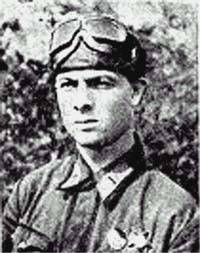
206 sorties, 74 air battles. He personally shot down 14 aircraft and 21 in the group, of which on the LaGG-3 2 were shot down personally and 8 in the group.
Zaitsev became known as the winner of the famous German ace Otto Schashke, who destroyed 20 of our aircraft in a month and a half. Zaitsev died very absurdly, in a test flight on the P-39 Airacobra in May 1942.
Hero of the Russian Federation Colonel Tormakhov Dmitry Dmitrievich
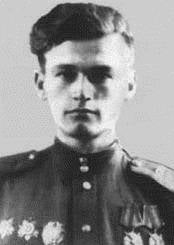
366 sorties, 71 air battles. He shot down 14 enemy aircraft personally and 2 in the group. On LaGG-3 - 12 aircraft in person and 1 in the group. In addition, Tormakhov destroyed 2 aircraft at airfields as a result of ground attack. Disabled 2 steam locomotives, 20 railway cars, 18 cars, 8 wagons with goods. A typical example of using the LaGG-3 as an attack aircraft.
Twice presented to the title of Hero of the Soviet Union. The first time the award did not take place, because Tormakhov was shot down for more than a week, he went out to his own, the second time the performance was rejected due to the fact that the battle score grew very slowly.
Justice triumphed in 1996, when by decree of President Yeltsin Tormakhov was awarded the title of Hero of Russia. Not posthumously, which is especially pleasing. Dmitry Dmitrievich went on his last flight only in 2002.
Hero of the Soviet Union Major Grigoriev Gerasim Afanasyevich
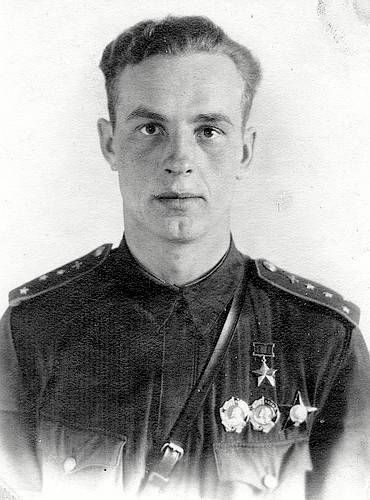
He won his first victory in the sky over Minsk, was seriously wounded in both legs by anti-aircraft fire, after being healed he was transferred to the 178th IAP of Moscow Air Defense. In the skies of Moscow on the LaGG-3 he made more than 300 sorties, 18 air battles, shot down 11 aircraft personally and 2 in the group. The total score is 12 personal victories and 5 group victories. The bill could have been more, but after 1943 Grigoriev did not fly, his injuries affected him.
A small digression: "Uncle Yura" from the program "Good night, kids" is Yuri Gerasimovich Grigoriev, the son of a pilot. Interestingly, sometimes human roads develop.
Hero of the Soviet Union Captain Mironov Viktor Petrovich
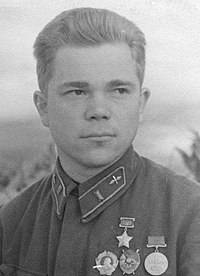
356 sorties, 88 air battles. He shot down 10 enemy aircraft personally and 15 in the group.
He fought on the Karelian front, the permanent follower and friend of Leonid Galchenko. He died in February 1943 in a plane crash.
Hero of the Soviet Union Guard Major Kostylev Georgy Dmitrievich
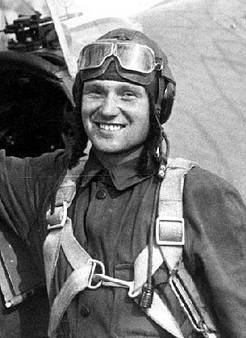
For his military service, Georgy Kostylev flew several types of aircraft, but he received the title of Hero of the Soviet Union flying the LaGG-3. By April 1942, fighting as part of the 3rd GvIAP of the KBF Air Force, Kostylev made 233 sorties, conducted 59 air battles, shot down 9 aircraft personally and 34 as part of a group. With these data, he was presented for the title of Hero of the Soviet Union.
Twice Hero of the Soviet Union Captain Kamozin Pavel Mikhailovich
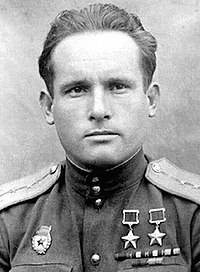
Another case when a pilot became a hero while fighting on the LaGG-3. Kamozin not only mastered the LaGG to perfection, he, as an instructor pilot, prepared more than four dozen pilots for battles on the LaGG-3.
From October 1942 to the end of March 1943, junior lieutenant Kamozin, acting as part of the 269 IAP on the LaGG-3, made 82 sorties to escort bombers, cover troops, reconnaissance and attack. In 23 air battles, he personally shot down 12 enemy aircraft. On May 1, Kamozin was awarded the title of Hero and the regiment went to master the Air Cobras, on which they fought no less effectively.
You can go on.
There were many pilots who started on the LaGG-3 or transferred to this aircraft at the beginning of the war. And their path was not finished in a “guaranteed coffin”, as pseudo-specialists from pseudo-history claim. On the contrary, many Germans, having met with our pilots on the LaGG-3, received the same coffin at the exit (at best).
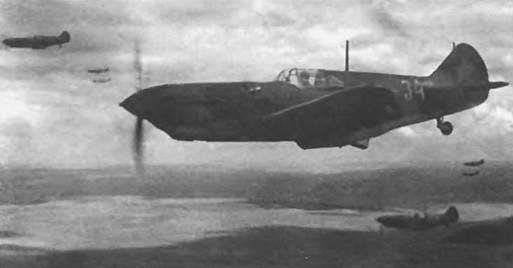
If you look closely at the evolution of the aircraft, then it did not have the most disgusting thing: shying away in order to correct a frankly unsuccessful aircraft. There were attempts to improve its performance characteristics, moreover, the replacement of the motor had a very positive effect. But when it became clear that the LaGG-3, as a fighter, could not compete with the new German and Soviet vehicles, it turned out to be quite a decent light attack aircraft.
Of course, the LaGG-3 is not an IL-2, so the plane was not able to storm the front line of the enemy’s defenses. But a good range made it possible to process targets behind the front line. The anti-aircraft gun that the IL-2 destroyed is useful. The anti-aircraft installation, which was left without shells due to the fact that the LaGG-3 stormed the train, is about the same.
In those days, it was not a practice to simply take and send the plane to a landfill. They selected goals and objectives that were relatively feasible, depending on the performance characteristics. And everything that the designers and engineers did with the aircraft was aimed at maintaining efficiency in terms of combat use.
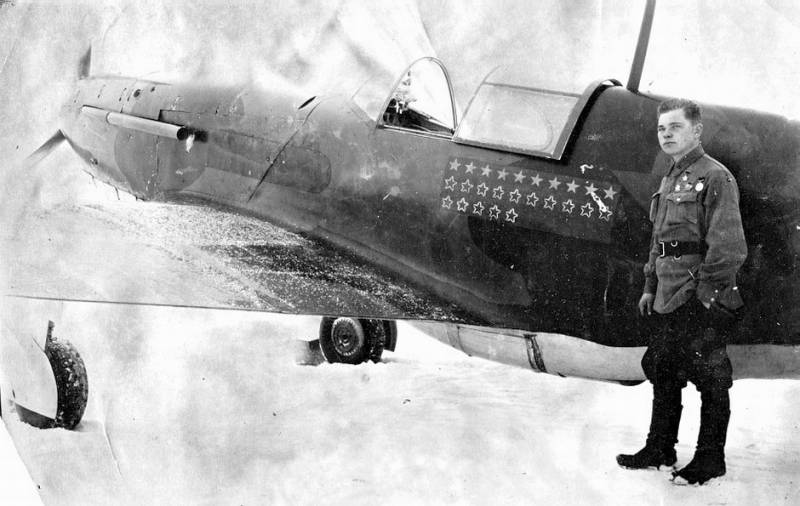
LaGG-3 was not a masterpiece, like some of his colleagues in the sky of that war. But also a frank freak too. A strong middle peasant who fought through the entire war, which not all fighters of that period could boast of at all.
Information